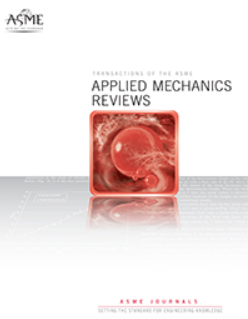应用进化多目标多物理拓扑优化的基因型-表型定位
IF 16.1
1区 工程技术
Q1 MECHANICS
引用次数: 0
摘要
提出了一种基于非排序遗传算法(NSGA-II)的多目标拓扑优化方法。所提出的方法是早期工程应用的工具,能够提供对结构特征和设计性能之间复杂关系的见解,而无需对客观空间进行先验假设。同时考虑了质量缩减、线弹性变形和静止热传导,并附加了三个约束条件。专门开发的基因型-表型映射确保了获得的设计命题的实际效益,并显着减少了生成密集的帕累托解集的计算工作量。映射过程平滑概率生成的结构,去除未连接的材料,并为随后使用的有限元求解器改进空间离散化。我们提出了具有多目标和多个近应用约束的大型三维设计问题的Pareto最优解集,这些解集是工程设计的可行设计命题。讨论了所得到的Pareto集合的几何特征。本文章由计算机程序翻译,如有差异,请以英文原文为准。
Genotype-Phenotype Mapping for Applied Evolutionary Multi-Objective and Multi-Physics Topology Optimization
We present a multi-objective topology optimization method based on the Non-Sorting Genetic Algorithm II (NSGA-II). The presented approach is a tool for early-stage engineering applications capable of providing insights into the complex relationship between structural features and the performance of a design without a priori assumptions about objective space. Mass reduction, linear elastic deformation, and stationary thermal conduction are considered simultaneously with three additional constraints. The specifically developed genotype-phenotype mapping ensures the practical benefit of obtained design propositions and significantly reduces computational effort to generate a dense set of Pareto solutions. The mapping procedure smooths probabilistically generated structures, removes unconnected material, and refines the spatial discretization for the subsequently used finite element solver. We present sets of Pareto optimal solutions to large three-dimensional design problems with multiple objectives and multiple near-application constraints that are feasible design propositions for engineering design. Geometrical features present in the obtained Pareto set are discussed.
求助全文
通过发布文献求助,成功后即可免费获取论文全文。
去求助
来源期刊
CiteScore
28.20
自引率
0.70%
发文量
13
审稿时长
>12 weeks
期刊介绍:
Applied Mechanics Reviews (AMR) is an international review journal that serves as a premier venue for dissemination of material across all subdisciplines of applied mechanics and engineering science, including fluid and solid mechanics, heat transfer, dynamics and vibration, and applications.AMR provides an archival repository for state-of-the-art and retrospective survey articles and reviews of research areas and curricular developments. The journal invites commentary on research and education policy in different countries. The journal also invites original tutorial and educational material in applied mechanics targeting non-specialist audiences, including undergraduate and K-12 students.

 求助内容:
求助内容: 应助结果提醒方式:
应助结果提醒方式:


